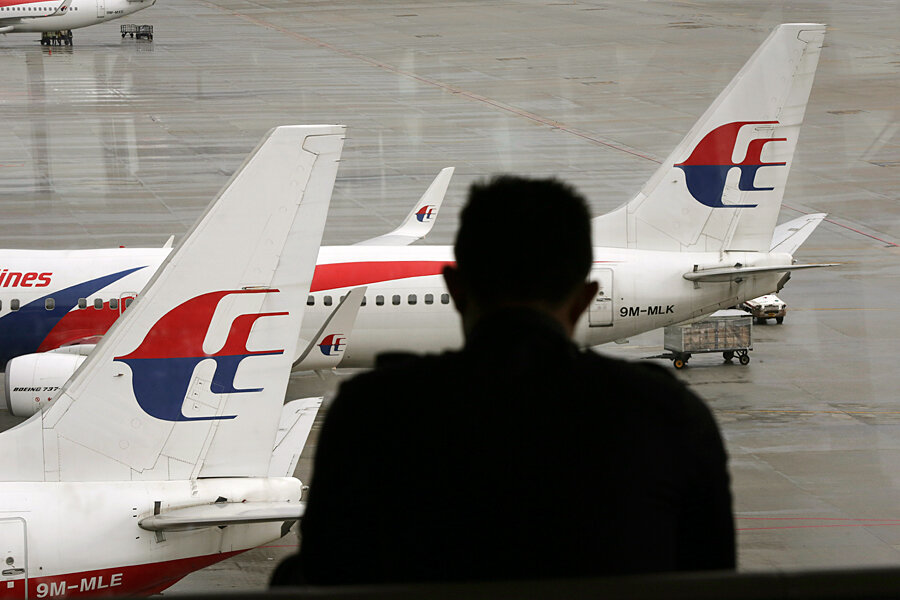Malaysia releases MH370 satellite data as Australia begins ocean floor mapping
Malaysian officials released the raw satellite data for Malaysia Airlines Flight 370 on Tuesday, ending longstanding requests from family members for the information to become public.
So why did authorities release the data now, and what impact will it have on the search for the missing aircraft?
Transparency and an effort to “provide helpful information to the next of kin and general public” were two reasons to release the data, the Malaysian Department of Civil Aviation wrote in a press release a few days before making the information public. The public data also comes as Malaysia’s prime minister travels for an official visit to China. Most of the 239 passengers on board were Chinese nationals.
Family members have repeatedly called on Malaysia and Inmarsat, a British satellite telecommunications company, to release the data – which is a series of electronic "handshakes" between the plane and Inmarsat satellites – so that it can be independently verified. Some family members are concerned that the search for the plane could be targeting the wrong area if it were based on miscalculations from the data.
Authorities involved in the search – which has so far involved 26 countries, 82 aircraft, and 84 sea vessels – said that the data supported their calculation that the plane most likely ran out of fuel and crashed into the eastern Indian Ocean.
The data release opens the door for armchair analysts, amateur sleuths, and experts to run their own analyses.
But in the long term, it will likely have little effect on the search for the aircraft. More important is the new phase that Australian authorities, tasked by the Malaysian government with leading the search for Flight 370 in the Indian Ocean, plan for their search. The Australian Transport Safety Bureau (ATSB) announced in a series of statements yesterday that its search would shift from looking for surface debris to mapping the ocean floor to better prepare for an underwater search.
The area that ATSB plans to search is vast – nearly 60,000 square kilometers, or about the size of the Australian island of Tasmania, and reaches depths of up to 20,000 feet.
The result of the mapping, known as a bathymetry survey, will also be released to the public. Scientists are excited about the prospect, since little data is available about the ocean floor. Maps of the arid surface of Mars are more developed than many maps of the ocean floor, the BBC reports.
In an article published in the American Geophysical Union magazine, Drs. Walter Smith and Karen Marks, who work for the US National Oceanic and Atmospheric Administration, said only two surveys of the ocean floor have been made in areas close to Flight 370’s targeted search spot.
"The state of knowledge of the seafloor in the MH370 search area, although poor, is typical of that in most of Earth's oceans, particularly in the Southern Hemisphere," they wrote, according to the BBC. "In many remote ocean basins the majority of available data are celestially navigated analogue measurements because systematic exploration of the oceans seems to have ceased in the early 1970s, leaving the ocean floors about as sparsely covered as the interstate highway system covers the United States."
The Chinese Navy ship Zhu Kezhen is already in the eastern Indian Sea to begin the mapping survey and will be joined by a contracted commercial vessel in June, according to the ATSB:
The bathymetric survey will provide a map of the underwater search zone, charting the contours, depths and hardness of the ocean floor.
While the ocean depth of the search zone is understood to be between 1000 m and 6000 m, we currently have very limited knowledge of the sea floor terrain facing the underwater search operation. The information we receive from the bathymetric survey will give us crucial data to plan and conduct the intensified underwater search.
The mapping survey is expected to take at least three months. The underwater search for Flight 370 will begin once the survey has collected enough data for a clearer picture of the underwater valleys and mountains that could inhibit the more technical machinery that will be used for the underwater search. Australian authorities are planning on using unmanned underwater vehicles with mounted sonar and imaging equipment for the search, which is expected to last at least a year.
The Australian government has budgeted $89.9 million over two years to find Flight 370, a cost that has raised some criticism at home, but that may end up being split with Malaysia, according to The Australian.







